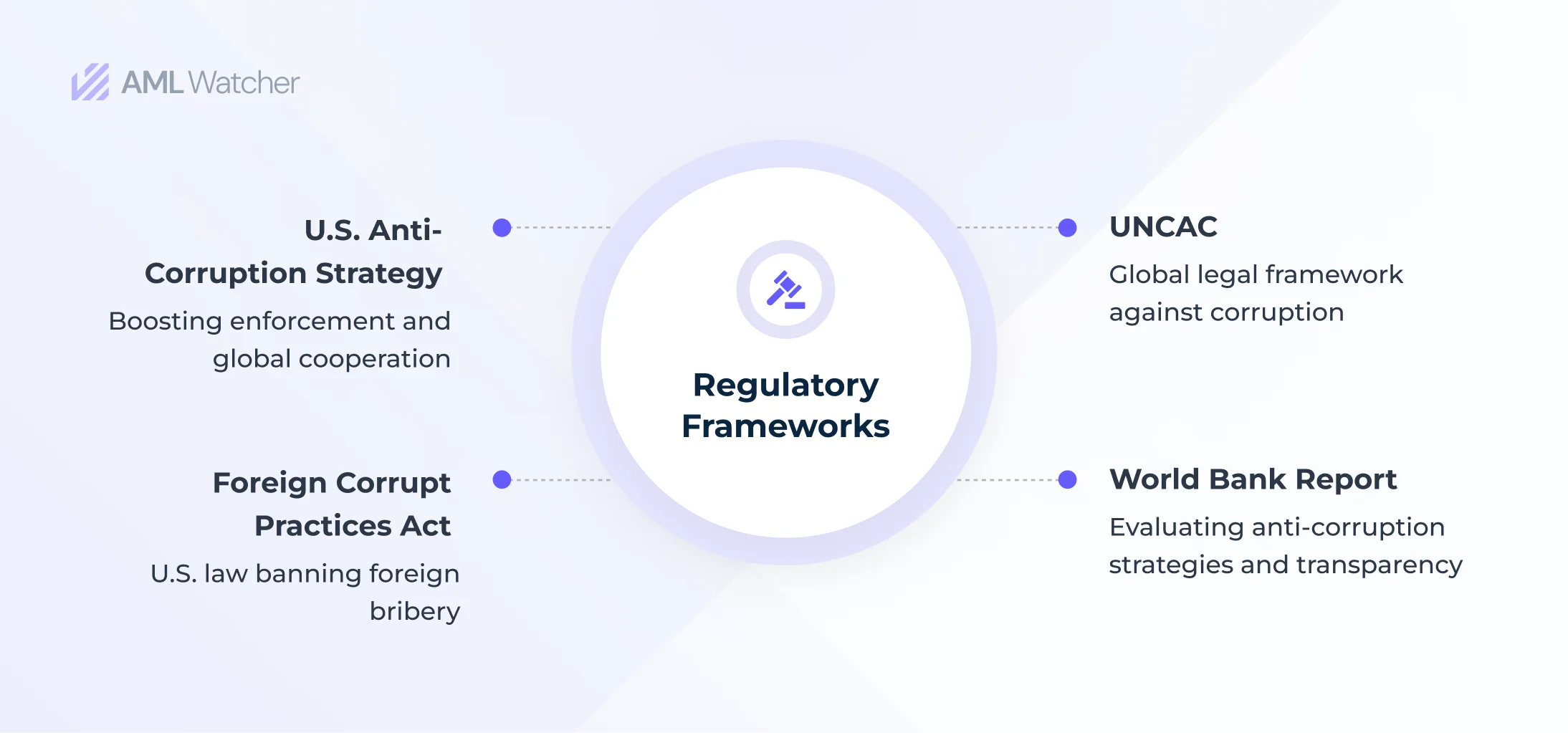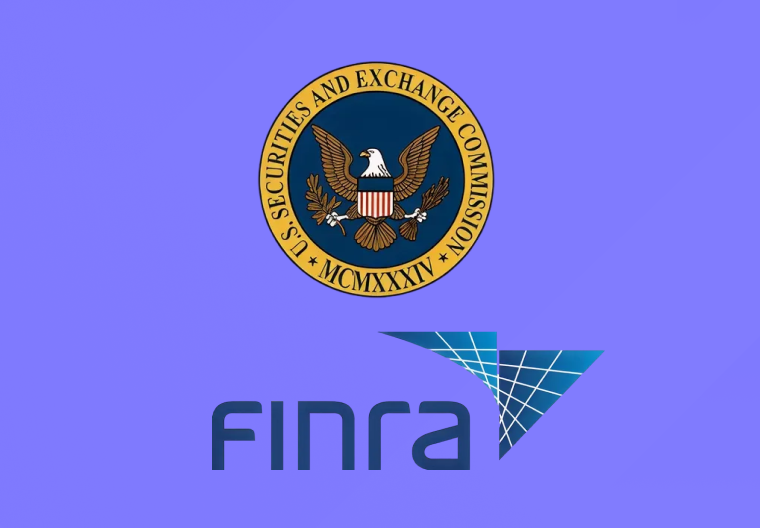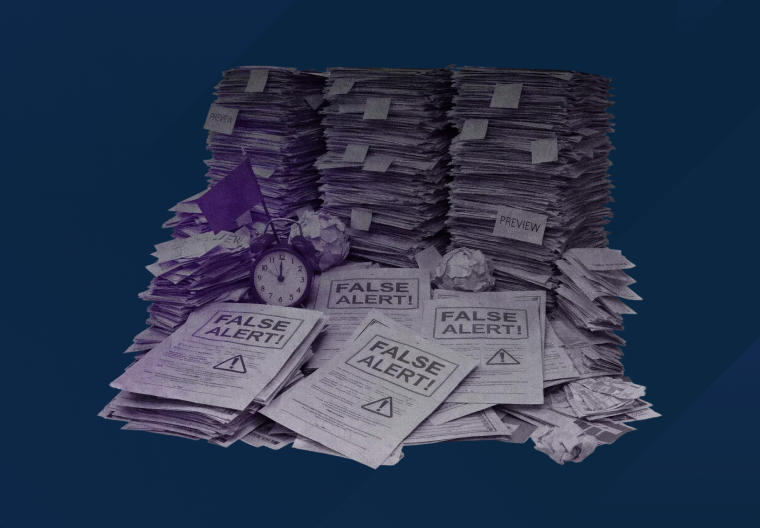
Corruption Monitoring – Vital for Minimizing the Financial Crime
No matter how stringent the laws and regulations may be, from an influential body to an ordinary person, corruption happens and pollutes the financial system greatly. For this purpose, corruption monitoring involves observing and detecting any activity that can be flagged as a corrupt practice. Most of the corruption involves crimes and fraud related to finances hence, the indicators for monitoring corruption directly relate to suspicious changes in the financial standing of an entity. £1.27 billion is lost annually to fraud, bribery and corruption in the NHS. According to a report by Transparency International which is an institute involved in countering global corruption, a significant percentage of global financial flows are linked to corruption. How the security of a financial institution can be fortified is of great concern. The FATF recommendations have accentuated a correlation between corruption and money laundering. Financial institutions and even other digital banks and wallets are the hubs of illicit financial activities that are prone to corruption. This marks a need for a strong security system that is adept at detecting and assessing the involvement of a corrupt entity through continuous monitoring of corruption. This in return acts as a safeguard for the entire economic system.
Let’s now deeply understand what corruption really is.
Understanding Corruption
In layman’s terms, corruption arises as soon as the misuse of power (at a societal or personal level) for personal gains is done. It unreservedly involves an ethical dilemma. It can be observed in various forms, and each is a direct threat to the financial and economic system. Bribery, nepotism/favoritism, embezzlement, and fraud of any kind that violates the established laws are all different forms of corruption. The laws of economics assume that whenever a financial transaction or the flow of money takes place, it is happening fairly. However, the misuse of power and an undue advantage of opportunity involving finances can greatly compromise fairness in the distribution of resources and competition and ultimately put the public interest at stake. Bribery, for instance, can lead to skewed investment decisions and misallocation of resources. The financial system involves investments and savings by people. However, fraud or embezzlement within financial institutions jeopardizes the savings and investments of individuals. This is best illustrated by the example of the Enron scandal that took place in the 2000s. The case was a highlight that shook the financial system and led to heavy losses for the investors.
This shows how a deep understanding of corruption and its type is crucial since the ways of monitoring corruption can only be devised if the various ways through which it is carried out can be understood.
To carry out monitoring of corruption let’s understand how technological tools help in getting reliability and accuracy in results.
Technological Solutions for Corruption Monitoring
Software and algorithms are highly advanced now such that they can read extensive datasets and analyze the cases of corruption. This may include suspicious or unusual transactions or any other means by which an undue advantage of power for personal gains was done. The way these tools work they read patterns, flag any unusual activity and hence aid in accurate investigations of cases. For instance, in public procurement, data mining is used for auditing to monitor government bids, identify red flags, and detect conspiracy and false information. Furthermore, interestingly enough, now there is greater use of technology like that of forensic tools, like Self-Monitoring, Analysis, and Reporting Technology (SMART), which are used for real-time transaction analysis and the detection of any unusual activity to combat corruption risks.
Corruption monitoring faces several challenges that can hinder its effectiveness. Let’s study them.
Challenges in Corruption Monitoring
Complex Nature of Corrupt Activities:
Corruption, involving suspicious activities also entails that certain methodologies or processes of corruption are adopted that it becomes an austere task to detect it in the first place. These activities are very well hidden on purpose to go undetected. To understand this, the World Bank highlighted the difficulty of detecting corruption through three case studies: Tunisia under Ben Ali, customs in Madagascar, and the elite capture of international aid. In all of the examples stated, some very complex procedures for carrying out corruption were used.
Limited Resources and Technological Capabilities:
Secondly, a limitation in resources for establishing advanced systems for detecting cases of corruption before customer onboarding can be a huge impedance. Even if the country or organization has human expertise but if it lacks technological resources, corruption monitoring procedures can not be put into action. A survey by Global Corruption Barometer – Africa 2019 by Transparency International found that more than one in four people in Africa paid a bribe to access public services. This high incidence of bribery indicates a lack of effective corruption monitoring and this is majorly attributed to limited resources in these countries.
The challenge in Ensuring Unbiased Practices:
Thirdly, the most important challenge is faced when it is to ensure that the monitoring process itself is unbiased and free of any ethical dilemmas. This is because this leads to often intentional oversights in detecting the cases by MLROs themselves. The United Nations Convention against Corruption (UNCAC) stood up and made laws for the establishment of anti-corruption bodies. However, these entities have oftentimes detected but also shown oversight in detecting fraudulent cases and corruption. It is interesting to note that almost 20 years have passed and ACAs have still not been able to effectively control corruption cases since the inception of UNCAC.
Political Resistance:
Another important aspect is that even if the system identifies the cases of corruption or the entities that were involved in corruption, the influential figures and politically powerful figures are strong enough to impede any anti-corruption efforts and hence can stop further investigations.
Lack of International Coordination:
Last but not least, collaboration by international bodies is imperative to combat corruption cases. If it is deemed an absolute necessity for the firms to incorporate corruption monitoring in their systems before customer onboarding, and all the benefits and laws are there to enforce this then an effective system of monitoring of corruption can be put in place.
We have seen the limitations that impede corruption monitoring efforts. However, regulatory frameworks ensure that the limitations are overcome to some extent through laws and regulations. Let’s have a look at these.
Regulatory Frameworks Supporting Corruption Monitoring
United States Strategy on Countering Corruption:
The Department of Justice (DOJ) has taken action through the proposition of new policies or revisions to the previous ones to allow the elimination of corruption. The proposed policies have gone as far as rewarding those organizations that voluntarily come forward and disclose any fraudulent actions. On top of that, to cover criminal as well as civil laws, the White House at the year-end of 2021, proposed a strategy that lies under the Foreign Corrupt Practices Act (FCPA). The focal point of the proposed strategy is to increase coordination between the US and foreign governments so that there are enforceable laws from which departure is not an option. These laws are focused on the annihilation of corruption.
Foreign Corrupt Practices Act (FCPA):
FCPA which is the most important wing of the anti-corruption policies proposed in the US puts forward stringent laws against any sort of bribery. It strongly prohibits undue payments or offers to pay payments or anything else of value that is undeserved by non-US government officials. It is said undeserved because the purpose behind bribery is merely influencing some decisions in someone else’s favor which may be illegal by laws. This Act is for foreign organizations/corporations operating under the jurisdiction of the USA, issuers of financial products or securities, and other domestic concerns. Any sort of violation can lead to the imposition of heavy fines without exclusions. Furthermore, it allows imprisonment in the case of individuals.
United Nations Convention against Corruption (UNCAC):
Looking from an international lens, the legal law that universally applies unanimously to all countries is UNCAC. The aim of the law is again detect and combatting cases of corruption. This law entails comprehensive clauses that cover how corruption can be prevented, and how it can be criminalized and enforced further. Additionally, since it is regarded as a universal law, international cooperation becomes imperative. For this, the law entails further clauses.
World Bank’s Assessment:
The report that the World Bank has published also highlights the issue of corruption and the measures that can be taken to alleviate it. The emphasis of the report is primarily on achieving transparency (which is the core of eliminating corruption). This ultimately leads to public engagement and accountability. Such measures are especially taken during high-risk conditions and for people with high-risk profiles.
Wrapping Up
Financial crime oftentimes includes cases of corruption and to safeguard the financial system from various forms of corruption, a well-developed system of anti-bribery and corruption monitoring must be in place. Identification of activities that lie under the domain of corruption is also crucial since this enables the formulation of advanced methodologies of the corruption evaluation process. Embezzlement, bribery, and any kind of fraud (all of which are some of the types of corruption) greatly skew the economic system and unfairly distribute the resources in the market. For a reliable system of monitoring corruption, technological solutions play a key role and have made this process smooth and error-free. Now advanced software and algorithms for data analysis are used which can read a huge dataset and detect cases of corruption. Although there is a presence of advanced tools to detect and assess corruption cases, however, online corruption monitoring services are not free of limitations. The process becomes arduous because of challenges like the complexity of understanding the nature of corruption, limited resources in establishing the corruption evaluation process, political resistance, and the need for international coordination all act as an impedance in effective corruption monitoring. Regulatory frameworks, like the United States Strategy on Countering Corruption, the Foreign Corrupt Practices Act (FCPA), and the United Nations Convention against Corruption (UNCAC), have formulated frameworks and strategies to help alleviate fraud using the corruption monitoring process. AML Watcher remains at the forefront of the security system by breaking the conventional systems and providing corruption monitoring through its advanced technology.
Contact us today to minimize financial crime, by systematic observation and analysis to detect and prevent corrupt practices in various sectors.
We are here to consult you
Switch to AML Watcher today and reduce your current AML cost by 50% - no questions asked.
- Find right product and pricing for your business
- Get your current solution provider audit & minimise your changeover risk
- Gain expert insights with quick response time to your queries




